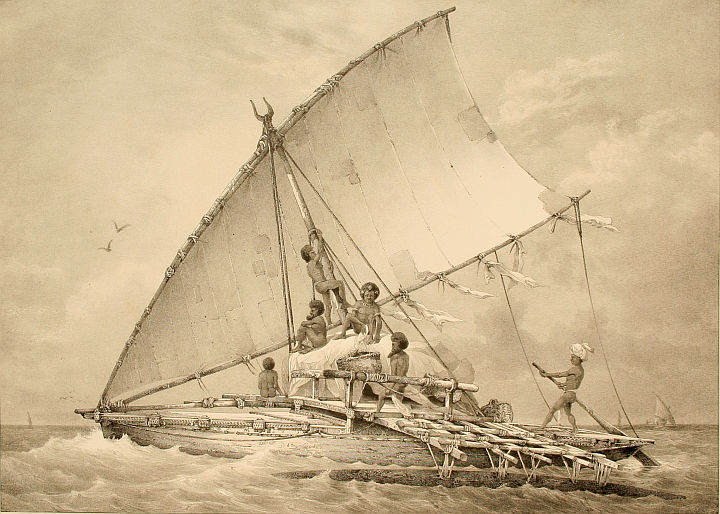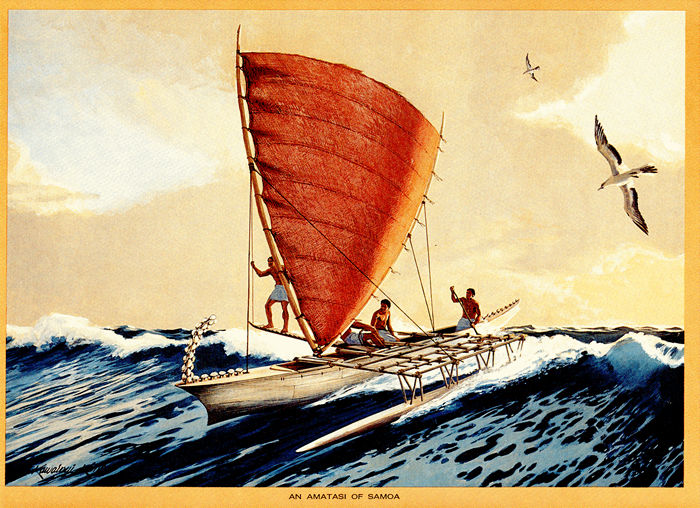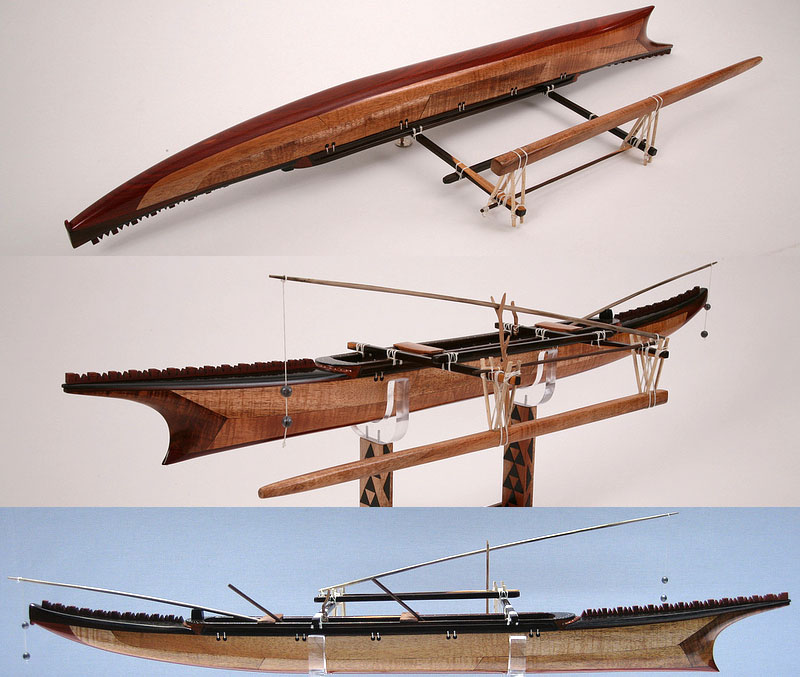[Samoa] Amatasi Outrigger Canoe
Yann2

I have been looking at various aspects of Samoan culture and society, and found the Samoan canoe designs wonderful. Various sources confirmed they had excellent design, performance and quality of build, being sought after in the other islands as very desirable.
I think these could make a very culturally significant stamp for Samoa. Please see the excerpts below, from various sources, with information about their design and significance.
"Outrigger Boats
Outrigger boats are various watercraft featuring one or more lateral support floats known as outriggers, which are fastened to one or both sides of the main hull. They can range from small dugout canoes to large plank-built vessels. Outrigger boats can also vary in their configuration, from the ancestral double-hull configuration (catamarans), to single-outrigger vessels prevalent in the Pacific Islands and Madagascar, to the double-outrigger vessels (trimarans) prevalent in Island Southeast Asia. They are traditionally fitted with Austronesian sails, like the crab claw sails and tanja sails, but in modern times are often fitted with petrol engines.
Unlike a single-hulled vessel, an outrigger or double-hull vessel generates stability as a result of the distance between its hulls rather than due to the shape of each individual hull. As such, the hulls of outrigger or double-hull boats are typically longer, narrower and more hydrodynamically efficient than those of single-hull vessels. Compared to other types of canoes, smaller outrigger canoes can be quite fast, yet are also capable of being paddled and sailed in rougher water."
source : Wikipedia
"Ancestral seafarers
Waka is the Maori word for canoe. The ancestors of Maori were among the greatest of canoe builders, navigators and mariners. Over the course of several thousand years, long before they came to New Zealand, M?ori ancestors swept out of South-East Asia and Oceania into Micronesia, Melanesia and Polynesia.
Early sea craft
The earliest crossings were probably made on rafts and dugout canoes. Travel was limited to neighbouring islands that were within clear sight of one another. Rafts could carry several people and heavy loads, but were slow. Dugout canoes were faster, but could carry only a few people. Both were unsuited to longer crossings – high seas washed people off rafts, and dugouts were prone to capsizing.
Outrigger canoes
Over time, an outrigger (a secondary hull fixed parallel to the canoe) was added to increase stability. Decks gave stability between the hull and the outrigger. Sails were also added for greater speed, and steering paddles controlled direction.
The Micronesian baurua and proa were the most sophisticated outrigger canoes. They were always sailed with the outrigger facing the oncoming wind, so that it did not drag and slow the vessel. Hulls had a distinctive asymmetric shape. The outside of the hull was flat, which stopped the wind pushing the canoe sideways; the inside was rounded to keep the water flowing between the hull and the outrigger. Carefully counter-balanced decks maintained overall stability.
The stability and speed of these canoes allowed navigators to sail across long stretches of open sea between relatively distant islands. European explorers, including James Cook and Charles Wilkes, observed craft like these moving much faster than their own ships: some were estimated to be travelling at up to 22 knots. In two separate incidents, Louis-Antoine de Bougainville in Samoa and Cook in Tonga wrote that outrigger canoes sailed around them, ‘with the same ease as if we had been at anchor’."
Source : Encyclopedia of New Zealand
The Amatasi of Samoa

"The amatasi had sails made of woven pandanus leaves tied to 2 spars. The hull of the pictured amatasi is the va'a alo built of planks to hunt bonito fish. It is a swift, deep-sea vessel. Lashed together, large double canoes 30-60 feet long could carry 25 men hundreds of miles in the Samoa-Tonga area. From a 1972 calendar in the Archives."
Sleek Design!
 .
.A wooden model built and published on BoatDesign forum.
"Contrary to what we (the western folks) might think, or contrary to what it might look to our eyes, the bow of this boat is the deep sharp end and the stern is the raised rounded part. In the bottom profile pic, the bow is on the right and the stern is on the left."
Log In
Yann2
Support new Location stamps for underserved Countries?
Dear Slowly friends,
Some of us stamp collectors decided to try to
get Location stamps
- for the many countries which still did not have ANY so far
. Many of us feel that is important, and fair with the Slowly users who live in these countries.Please check this
Reddit topic
, and see a list of currently active proposals. If you think this idea has merit, your support would be very appreciated
.An upvote, a comment in a topic are always welcome, and help ideas become reality. There are more than 25 proposals so far, and some are even in the
IN PROGRESS
stage now!I also wrote a detailed Blog post about
creating nice and successful proposals
for the Slowly Suggestions site. It could help you spruce up your own ideas and presentations here? Thank you !
Nonethewiser
Great job, Yann2! I think this is a beautiful and original idea that would give people a chance to learn more about this unique culture. And would also look great as a stamp 😊
Yann2
Nonethewiser: Thank you! I liked the canoe at first sight - and had to learn more about it. Happy I did find the first image, as it is really a very significant cultural artefact.
Yann2
Step Hanie
Yann2: voted. It will be a nice stamp 😊
Yann2
Step Hanie: Thank you, Step!!